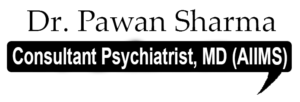Dr. Pramita Sharma, MD
In recent history, the world has faced various outbreaks, epidemics, and pandemics. From the Zika virus, various strains of influenza (bird, swine), Ebola, SARS, to most recently, novel coronavirus 2019, or COVID-19. Right now, the world is battling a coronavirus pandemic. It started in December 2019, when a group of people from China’s northern  Hubei province developed an unexplained pneumonia-like condition. By the end of the month, the local scientific community managed to pinpoint the source of the disease and establish its link to the SARS virus that terrorized the world 17 years ago. As 2020 rolled around, the outbreak turned into an international pandemic. Each new country the virus spread to fuelled panic and demand for information regarding the disease. As a result, social media became both an indispensable source of vital information and a fertile ground for dangerous rumor-mongering, with claims of equal shock value but varying truth making big waves across the world. The WHO Director-General even stated: “We’re not just fighting an epidemic; we’re fighting an infodemic.” WHO and other public health organizations also use social media to inform the public about the outbreak and control the panic.
Hubei province developed an unexplained pneumonia-like condition. By the end of the month, the local scientific community managed to pinpoint the source of the disease and establish its link to the SARS virus that terrorized the world 17 years ago. As 2020 rolled around, the outbreak turned into an international pandemic. Each new country the virus spread to fuelled panic and demand for information regarding the disease. As a result, social media became both an indispensable source of vital information and a fertile ground for dangerous rumor-mongering, with claims of equal shock value but varying truth making big waves across the world. The WHO Director-General even stated: “We’re not just fighting an epidemic; we’re fighting an infodemic.” WHO and other public health organizations also use social media to inform the public about the outbreak and control the panic.
While the government of the affected countries and the World Health Organization work to communicate measures to contain the outbreaks, it can be difficult to understand the implementation of next steps with such rapidly changing information. This results in many businesses, organizations, hospitals, and state and local government agencies wondering if they are truly prepared to handle a pandemic, no matter the scale.
Communication is an essential element of outbreak management. When the public is at risk of a real or potential health threat, treatment options may be limited, direct interventions may take time to organize and resources may not be enough. Communicating advice and guidance, therefore, often stands as the most important public health tool in managing risk. Pro-active communication encourages the public to adopt protective behaviors, facilitates heightened disease surveillance, reduces confusion and allows for better use of resources all of which are necessary for an effective response. In early 2004, WHO began to construct evidence-based, field-tested communication guidance that would promote the public health goal of rapid outbreak control with the least possible disruption to society. The WHO Outbreak Communication Principles can be summarized as follows:
- Trust: The key principle of outbreak communication is to communicate in ways that build, maintain or restore trust between the public and outbreak managers. Without this trust, the public will not believe or act on, the health information that is communicated by health authorities during an outbreak.
- Announcing early: Proactive communication of real or potential health risk is crucial in alerting those affected and minimizing an infectious disease threat. Announcing early even with incomplete information prevents rumors and misinformation. The longer officials withhold information, the more frightening the information will seem when it is eventually revealed, especially if it is revealed by an outside source. A late announcement will erode trust in the ability of public health authorities to manage the outbreak.
- Transparency: Maintaining the public’s trust throughout an outbreak requires ongoing transparency, including timely and complete information of real or potential risk and its management. As new developments occur over the course of an outbreak they should be communicated proactively. Transparency should characterize the relationship between the outbreak managers, the public and partners as it promotes improved information gathering, risk assessment and decision-making processes associated with outbreak control.
- Listening: Understanding the public’s risk perceptions, views and concerns are critical to effective communication and the broader emergency management function it supports. Without knowing how people understand and perceive a given risk and what their existing beliefs and practices are, decisions and required behavior changes necessary to protect health may not occur and societal or economic disruption may be more severe.
- Planning: Public communication during an outbreak represents an enormous challenge for any public health authority and therefore demands sound planning, in advance, to adhere to the principles described above. Planning is an important principle, but more importantly, it must translate into action.
Thus, communication preparedness plans need to be developed. Secure websites and list-serves should be created to move and share information during an outbreak. And evaluation tools need to be developed. Model talking points and frequently asked questions should be created to help guide communicators. Information should be collected only from reliable sources. The spread of misleading information and the subsequent fear can lead to many negative outcomes. So, it is imperative to have good communication from the authorities.

